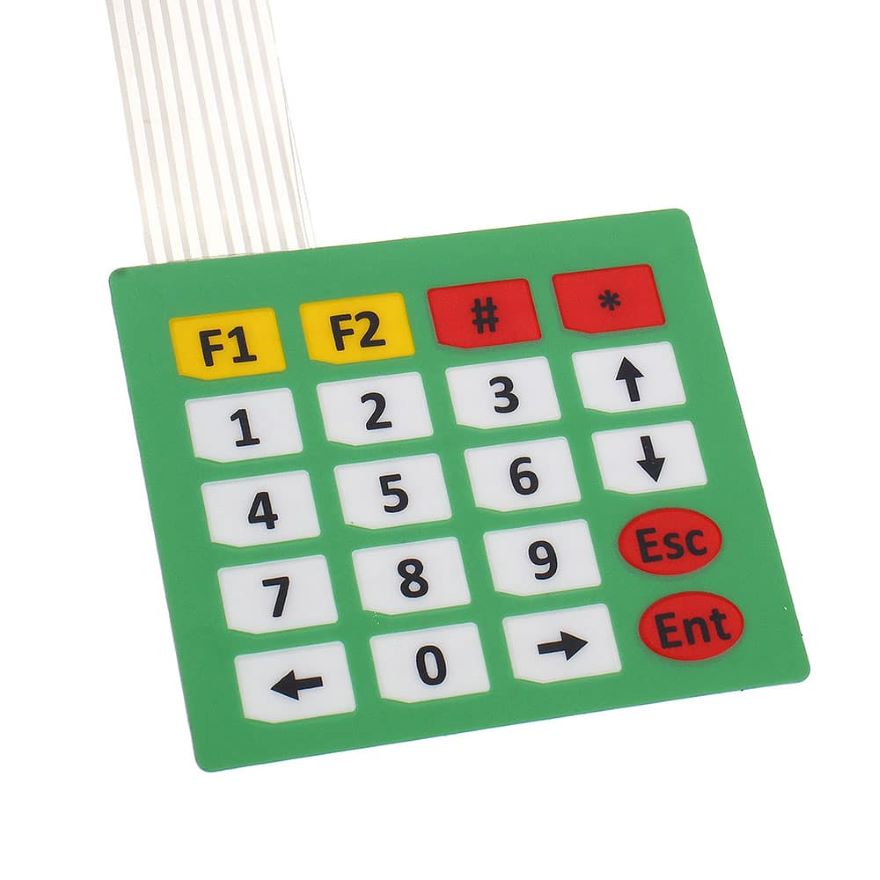Membrane keypads are an excellent starting point for adding key input to a project because they are inexpensive, long-lasting, and resistant to water. And knowing how to interface them with an Arduino is extremely useful for building a variety of projects that require user input for menu selection, password entry, or robot operation.

Graphic Overlay – Graphic overlays are typically made of polyester because it has better flex life than polycarbonate.
Metal Domes – This layer houses metal domes or polydomes that provide tactile feedback.
Top Circuit Layer – This is typically a polyester printed layer with silver-filled electrically conductive inks. This layer terminates as a flexible tail that connects to the outside world.
Spacer – This layer separates the top and bottom circuits, allowing the switch to remain normally open until the keypad is pressed.
Bottom Circuit Layer – This is typically a polyester printed layer with silver-filled electrically conductive inks. This layer also terminates as a flexible tail.
Rear Adhesive Layer – This layer sticks the keypad to almost anything, which is convenient.
Matrix Membrane Keypad Specs:
- Circuit level: 35V DC, 100mA, 1W
- Standard square resistance: <=50mQ/mil
- Contact resistance: 10-500Q (with lead length and material variation)
- Insulation resistance: 100MΩ 100V
- Dielectric withstand voltage: 250VRms (50-60Hz 1min)
- Contact jitter time: <=5ms
- Operating pressure Metal shrapnel type: 220-350g
- Switching stroke Metal dome-type: 0.6-0.8mm
- Storage temperature: -0°C~+60°C16H
- Storage humidity: 70%-90%
- Test humidity: 70%-90%
- vibration: 20G's msx. (10-200HZ, MIL-202, M204, Condition B)
- Line thickness: <=0.13mm
